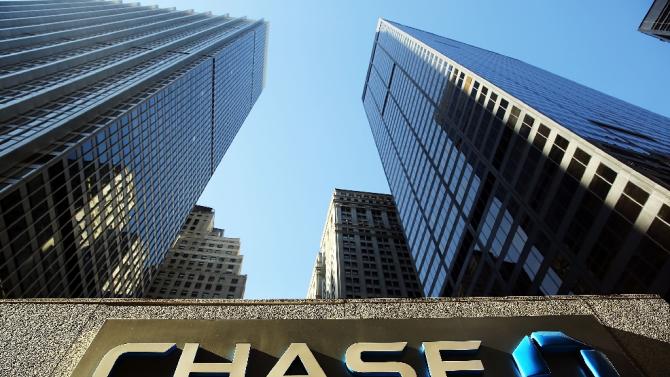Chase takes aim at Apple, Google with new mobile payments service
October 26, 2015
JPMorgan Chase (JPM), one of the world’s biggest banks, on Monday announced a new mobile payments service meant to compete with similar offerings from tech giants Apple (AAPL), Google (GOOGL) and Samsung.
The new service, called Chase Pay, will be available by the middle of next year. And unlike its competitors, Chase’s service will work at almost all leading retailers, including Walmart (WMT) and Target (TGT). Chase Pay will also work at the most popular pharmacy, gas station and grocery chains that have lagged in adopting Apple and Google’s pay services.
Chase Pay will allow consumers to rack up rewards points with their Chase credit cards as well as with retailers’ loyalty and rewards programs, Gordon Smith, CEO of Chase’s Consumer and Community Banking division, said in a speech at the Money 20/20 conference in Las Vegas. Google, Apple and Samsung have promised to integrate loyalty rewards program as well, but rollouts have been uneven and slow.
Consumers are just getting started with mobile payment services, but analysts expect usage will grow quickly over the next few years as more stores accept smartphones at the register alongside traditional plastic cards for payments. Consumers spent only about $16 billion in stores with mobile payments last year, according to research from eMarketer. But the total is expected to grow to almost $70 billion by 2019.
Chase’s new service will rely on relatively low-tech bar codes displayed by the Chase pay app on any smartphone. Apple and Google are using a more modern wireless technology that relies on a Near Field Communications, or NFC, chip which is only included in some phones.
But Apple doesn’t allow any other company’s apps to access the NFC chips in iPhone, putting would-be competitors in a tough position. Google chose to use NFC for its Android Pay, but the service can’t work on iPhones. Capital One’s (COF) recently introduced NFC-based mobile service also works only on Android phones.
Chase wanted its service to work on both Android and Apple phones, so it must rely on older bar code technology. Making a consumer scan the code for a purchase is slower and more cumbersome that the “tap and pay” enabled by NFC chips.
Chase is partnering with the Merchant Customer Exchange LLC’s CurrentC service, a joint venture established by the big retailers to create a payments service.
There is some irony in Chase partnering with CurrentC. Big retailers set up the venture in 2012 with the hopes of convincing consumers to pay more frequently with store-issued private label cards and debit cards rather than credit cards issued by Chase and other banks, which carry higher transaction fees for the retailers. But CurrentC has yet to offer a product beyond a small beta test and has been leapfrogged by Apple and Google.
All 94 million cards issued by Chase would be signed up by default. That could help Chase’s service gain critical mass immediately, analysts said. Chase said half of all U.S. households have at least one credit, debit or pre-paid card issued by the bank. Customers charged $707 billion last year.
“They have the connections on both sides to merchants and consumers, and they have an immense scale as a consumer bank,” says James Wester, research director for global payments at IDC Financial Insights.
Apple will have more than a one year headstart on Chase, but most consumers have yet to try Apple Pay. A new survey from Phoenix Marketing released on Monday found only 14% of U.S. households with a credit or debit card have tried Apple Pay even one time over the past year. And American Eagle Outfitters (AEO), an early Apple Pay backer, disclosed that fewer than 1% of its sales used the Apple service.
Search
RECENT PRESS RELEASES
Related Post




